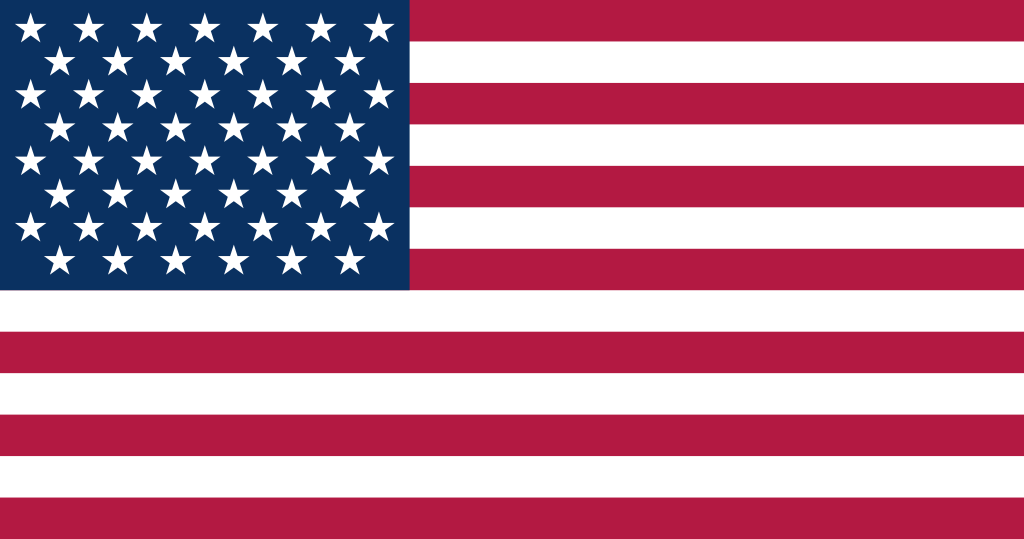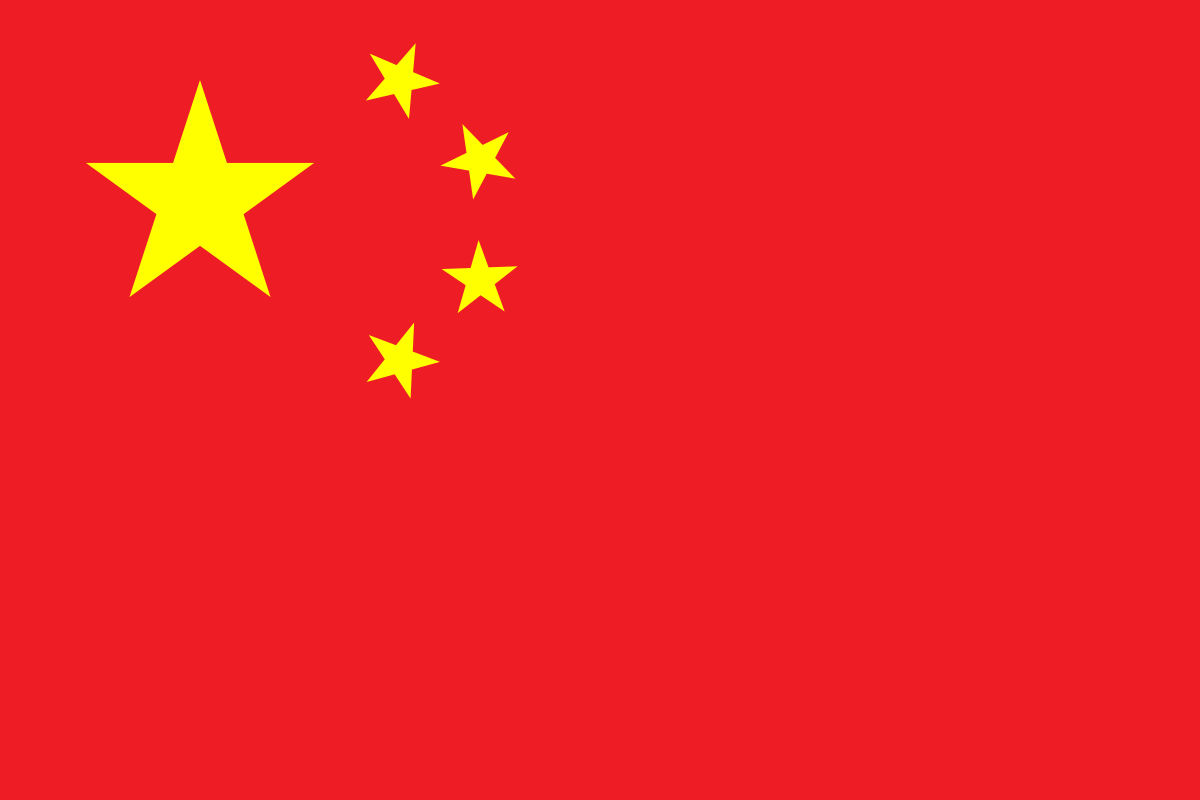United Nations of Earth
Table of Contents
Government
The United Nations of Earth is structured as a federal parliamentary representative republic. It is typically classified as a liberal mixed-market democracy, with low levels of corruption.The General Assembly is the sole legislative body for the UNE, and has 2,501 members. The General Assembly is elected on a district basis, where citizens vote for a local representative, who then attends the General Assembly on Earth. The General Assembly has significant political power when compared to the executive and judicial branches of goverment. The head of government is the Secretary-General, who is elected by a majority vote upon commencement of the General Assembly.
The President is the head of state of the UNE, and is elected through a popular vote among all citizens of the UNE. The President's powers are limited compared to that of the General Assembly, and is responsible for signing or vetoing legislation, pardons, acting as the diplomatic representative of the UNE, acting as the Commander-in-Chief of the UNE, and several other duties. The executive function of government is handled through the United Nations Executive Council, which consists of the President, the Secretary-General, and cabinet.
The UNE has an independent judiciary separated from the executive and legislative branches of government. Local or planetary courts handle smaller crimes, while the United Nations Court of Justice is the highest court of appeal, as well as matters of constitutional importance. In addition, the UNE operates on a civil law system.
The smallest division of the UNE is an electoral district, which is typically confined to a section of a single planet or orbital. In cases where a colony or outpost does not have enough people to justify a district, it is placed within the nearest district. Electoral districts are purely for electing members of the General Assembly, and do not constitute an administrative division.
The lowest tier of administrative division is instead a planet or system habitat complex. Planets are permitted to elect their own governors and organise themselves as they see fit, as long as they adhere to the rules set out in the constitution. In exchange, planets have rights provided by the constitution, such as limited interference from the federal government and the ability to create military units for self-defence.
The middle tier of administrative division is that of sectors. A sector includes multiple planets and star systems, and is overseen by a sector governor appointed by the federal UNE government. Sector governors are responsible for managing uninhabited systems, maintaining relations between the member planets of the UNE, and coordinating the development of those planets where possible. Sectors are not represented in the General Assembly, and only exist as an administrative layer. Above the sector administrations is the federal government, which governs the entirety of the UNE from Earth.
History
Origins
During the first half of the twentieth century CE, Earth was divided into a number of warring states and competing alliances. In the aftermath of the First World War (1914-1919 CE), an international organisation called the League of Nations was formed in order to maintain world peace. However, it failed in its mission, and on 1 September, 1939 CE, the Second World War broke out. The Second World War was primarily fought between the egalitarian Allies and the militarist Axis, with mobilisation numbers in the hundreds of millions. The Allies won the war in 1945 CE, when two atomic weapons were used on the last remaining Axis member. Following the war, the victorious Allies created the United Nations on 24 October, 1945 CE. Like the League of Nations, its goal was to promote world peace and diplomacy, but unlike its predecessor, it did not require unanimous approval to undertake actions.The immediate aftermath of the Second World War saw the two main Allied powers - the United States of America and the Union of Soviet Socialist Republics - split apart along ideological lines. The United States believed in liberal capitalism, while the Soviet Union believed in collectivist socialism. As the two superpowers had nuclear weapons, outright war was impossible without destroying the planet. Instead, the two engaged in economic and political competition to prove the superiority of their ideologies. This became known as the First Cold War.
First Cold War
On 4 October, 1957 CE, the Soviet Union successfully launched a satellite named Sputnik 1 into low Earth orbit. This was the first Human-made object placed into a stable orbit, and began a period known as the Space Race. The Soviet Union was also the first nation to successully place a Human in orbit, with the Vostok 1 mission on 12 April, 1961 CE. However, the Space Race was ultimately concluded by the United States on 16 July, 1969 CE, when the Apollo 11 mission landed two Humans on Luna, Earth's natural satellite.The First Cold War came to a conclusion in 1991 CE, when the Soviet Union voluntarily dissolved, emerging as a number of democratic successor states. The United States and its allies were left as the uncontested world superpower, and their ideology was viewed by some as the ultimate conclusion of Human political thought. However, by the 2020s CE, the People's Republic of China had emerged as another competitor to the United States, and a resurgent Russian Federation, born from the ashes of the Soviet Union, began aggressively expanding its territory. This period marked the beginning of the Second Cold War.
Second Cold War
At the same time, Human industry was causing significant effects on Earth's climate. Chemicals released into the atmosphere by heavy industry began absorbing sunlight and raising the planet's temperature. Throughout the 21st century, the issue of climate change came to dominate the politics of the planet. In desert regions, resource wars began over dwindling water supplies, fuelled by the two superpowers in an effort to secure petrochemical resources. The United Nations, which many considered a failed organisation by this point, was nearly overwhelmed with requests for aid by nations across the planet. However, the UN was able to successfully stabilise multiple countries. By the late 2040s, several nations had ceded their national authority to the UN as trust territories, to positive results.A new Space Race began in the late 2020s CE, as American astronauts once again landed on Luna. Several nations set up permanent settlements on the moon, as well as stations orbiting both celestial bodies. In 2039 CE, the United States the first nation to land on another planet, this time Mars. In the decades that followed, the International Space Agency was formed to coordinate the acitivites of the various nations of Earth in space, and small colonies were established on Mars.
On 13 August, 2044 CE, the president of the Russian Federation died, throwing the nation into political turmoil. A civil war broke out, and neither of the two superpowers trusted the other to intervene to secure nuclear weapons. Instead, a multinational coalition under the United Nations intervened with the support of both China and the United States. Its mission gradually expanded, until it was effectively a third belligerent in the conflict. By the end of the decade, however, UN forces had seized the capital city, and a provisional government under UN supervision was declared.
The BosWash Riots of 2067 CE, centred in the northeastern United States, had a profound effect on both the country and the rest of the world. Sweeping changes to legal systems across the world were made, and police were generally demilitarised. However, the global power and prestige of the United States was greatly diminished as a result of these violent weeks.
Climate change and great power competition worsened over the second half of the 21st century CE, but the UN was able to attain more and more power. Before the century had concluded, over two-thirds of Earth's nations had ceded their sovereignty to the organisation, while retaining their own self-rule. Chinese and American armed forces clashed during the Second Korean War and the Taiwan War, but nuclear war was averted thanks to the intervention of the United Nations.
Continuing Unification
Despite the best efforts of the UN and scientists, climate change worsened in the late 21st century CE. This was compounded in 2072 CE by the impact of the asteroid 711494 Satis into the nation of Canada, destroying its most resource-rich province and causing significant devastation to the rest of the continent. To deal with the increasing chaos on the planet, the UN began adopting more heavy-handed policies, such as banning the production of certain highly pollutive products globally without consulting its member states. In 2082 CE, the International Space Agency detected an anomaly at the outer edge of the Kuiper Belt. An unmanned probe dispatched to the located discovered a tear in the fabric of spacetime - a wormhole. A second probe sent through the wormhole found itself in the Deneb System, and a habitable planet was discovered, suitable for Human life.The United Nations and the International Space Agency immediately commenced the Ulysses Initiative. Its goal was to transport 1.5 million colonists to the Deneb System, using six purpose-built ark ships constructed in Earth orbit. The International Space Station II was the base of operations for the Ulysses Initiative, which took thirteen years to complete. In 2095 CE, the six ark ships were launched, but as the final ship - the Hyacinth - passed through the wormhole, it collapsed, and the ships were considered lost with all hands. The Ulysses Disaster put a damper on Earth's burgeoning space industry, and all further extrasolar colonisation efforts were immediately abandoned.
With a failing economy and looming authoritarianism, the United States surrendered its sovereignty to the United Nations in the first years of the 22nd century. Only two years later, however, its rival in China experienced three coups in one year, and with the threat of civil war, requested the intervention of UN peacekeepers. The final nation to surrender its sovereignty to the UN was the United Kingdom, which agreed to join in the year 2130 CE.
World Government
With every nation on the planet now a self-governing state under the governance of the United Nations, the New York Conference began in early 2131 CE. During this conference, the nations of Earth agreed that the United Nations of Earth would be the sole governing body of the planet, and was reorganised to better suit this role. It would act as a federation of all the nations of the planet, but individual nations would continue to self-govern under democratic systems. While the majority of the population accepted the role of the UNE as a world government, there were many who continued to resist.Colonel Edward Tetchu, leader of a brigade of UN special forces, seized a fortified airbase in Mauritania in 2188 CE, taking multiple high-ranking hostages. Together with local militia, other defecting UN units and uprisings across the African Union, they demanded the restoration of the old system of national sovereignty. The United Nations refused to negotiate, and a bloody three-month battle left tens of thousands dead, but Colonel Tetchu was apprehended and faced trial. Although many continued to resent the UN's all-encompassing global authority after this, there were no future armed revolts.
Hyperspace
In 2193 CE, scientists discovered the existence of a dimension within subspace that could potentially allow for the rapid transit of matter, faster than light, between star systems. This dimension, called hyperspace, was studied further, and the hyperlanes were discovered. In 2198 CE, the first hyperdrive was developed, and an unmanned probe was sent through a hyperlane to the adjacent system of Alpha Centauri. There, it a habitable world was discovered, and efforts were immediately made to construct new hyperspace-capable ships that could explore the galaxy.The first hyperspace-capable science ship, the UNS Discovery, was commissioned in 2200 CE, and arrived in the Alpha Centauri System only a few weeks after its launch.
Demographics
The population of the UNE is primarily Human, with significant numbers of Rocs, Kiliks, Scyldari, and mechanical citizens; virtually all species in the galaxy are present within the UNE in significant numbers. The majority of the UNE's population is concentrated within the core sector - Earth and the oldest colonies, dating to the beginning of the 23rd century CE. Within planets, the population tends to be highly urbanised, living in high population density cities where possible. However, there are also large suburban, semi-rural, and rural populations, especially on agri-worlds or newly-established colonies. The most highly populated planets are Earth, Horizon, Terra Nova, and Concord. Significant numbers of UNE citizens also live on habitats, of which there are a large number.Thanks to a robust healthcare system, genetic engineering, and relatively low levels of pollution on most worlds, non-cybernetic citizens of the UNE have a life expectancy 30-40 years longer than average (depending on species). The UNE is also an attractive migration destination, for a variety of economic, social, political, and security reasons.
Economy
The United Nations of Earth is a large, post-industrial, semi-post-scarcity, mixed-market economy. The public sector plays a very large role in the economy compared to most others, as the United Nations government provides basic necessities to all citizens, free of charge, in addition to a basic income for luxuries. These necessities include food, housing, communications, transport, healthcare, and education. With basic needs met, the private sector specialises in luxury goods, services, information technology, and shipbuilding. As with most interstellar societies, older colonies closer to the homeworld tend to specialise in manufacturing, while outlying colonies are more focused on primary resource extraction.The majority of agriculture and mining facilities are either government-owned, or operated by large corporate interests. A small minority of these sectors are owned by either private landowners or cooperatives. Cooperatives are more common in the services sector of the economy, where they make up a considerable percentage of the sector. Callisto's is the largest business in the restaurant industry in UNE space, with branches on every planet and habitat as of 2355 CE, and is organised as a cooperative. While most agriculture is conducted planetside, a number of starbases and habitats operate large hydroponic farms in order to supplement their food sources, or export it. In comparison, spaceborne mining operations are significantly larger, with most habitat complexes operating astro-mining facilties.
Society
Individual rights, equality under the law, and liberal democracy are the socio-political values held by the citizens of the United Nations of Earth. The UNE's constitution, based on historical texts first created centuries ago in Earth's Enlightenment Period, lays out both negative rights (such as freedom of speech and the right to own private property) and positive rights (such as the right to healthcare and education). In addition, the UNE legally guarantees a high standard of living for all citizens, one that is on par with the rulers of many other societies. While expensive, this 'utopian abundance' as it is often referred to has allowed citizens of the UNE to pursue their dreams in life without being beholden to economic necessity.The combination of constitutional rights, a guaranteed standard of living, and a culture of acceptance towards outsiders has created high levels of social trust within UNE society, both between individuals and between the public and institutions. Slavery, including indentured servitude and forced labour, is totally outlawed within UNE space, and any slave that enters territory claimed by the UNE is considered to be immediately freed. This also extends to artificial intelligences, which the UNE considers to be sapient beings fully protected by the law.
The free expression provided by the constitution and excess leisure time created by a high standard of living has created a very strong artistic sector within the UNE. Paintings, sculptures, music, performances, film, games, holos, sensory experiences, and other kinds of art are all in high demand by the population. Culturally significant artwork is curated by the Department of Culture, which operates rotating exhibitions on all worlds and habitats within UNE space.
UNE society is highly multicultural and multispecies. Due to the federal, semi-decentralised nature of UNE governance, individual planets are free to develop their own cultures and expression. Multiple cultures have also developed within planets, especially on the homeworld of Earth. Every species is accepted in the UNE, with the immigration and naturalisation process being one of the simplest in the galaxy. In addition, infrastructure in the UNE is designed to accomodate as many species as possible.
Healthcare in the UNE is some of the best in the galaxy, with a combination of preventative genetic treatments being made available at no cost, and many of the most prestigious medical institutions located within its borders. Genetic modification is becoming increasingly popular thanks to technology provided by the Gorthikan Alliance, and the average UNE citizen has substantial genetic alterations to improve their body. Education is also a priority in the UNE. Standard educational practices such as reading, writing, and mathematics are taught, as well as topics such as civics, culture, critical thinking, and other topics that promote an engaged populace.
Military
The military of the United Nations of Earth is the United Nations Armed Forces, commonly referred to as the UNAF. Established in 2131 CE as part of the New York Conference, it is descended from the national militaries of pre-FTL Earth. The UNAF is administered by the civilian Department of Defense, and the Commander-in-Chief is the President of the United Nations of Earth. It is divided into two branches: the United Nations Naval Forces (UNNF), which operate warships and patrol the space of the UNE; and the United Nations Planetary Forces (UNPF), which defend friendly planets and habitats or seize hostile ones.The UNAF is consistently rated as one of the most powerful militaries in the galaxy, aside from the ancient empires. It often works in concert with the other national fleets of the Interstellar Concord, as well as the federal Interstellar Concord Federal Navy under the joint control of the federation. The military is supported by the UN Civil Intelligence and UN Military Intelligence agencies, which are under the control of the Department of Foreign Affairs and Department of Defense respectively.

Peace, dignity and equality
2131 CE (New York Conference)
Luna
Mars
Horizon
Terra Nova
Concord
Atlantis
Olympia
Oceania
Sol Habitat Complex
Barnard's Star Habitat Complex
- 1 Ceres
- 134340 Pluto
- 136108 Haumea
- 136472 Makemake
- 2 Pallas
- 20000 Varuna
- 3 Juno
- 4 Vesta
- Alpha Centauri Station
- Alpha Centauri System
- Arcturus Station
- Arcturus System
- Armstrong
- Atlantis
- Barnard's Star Habitat Complex
- Barnard's Star Station
- Barnard's Star System
- Callisto
- Concord
- Earth
- Earth Orbital
- Earth Station
- Epsilon Eridani Station
- Epsilon Eridani System
- Europa
- Fen Habbanis Station
- Fen Habbanis System
- Ganymede
- H-77-BS12
- Horizon
- Io
- Iresta System
- Jupiter
- Kuiper Belt
- Luna
- Luna Orbital
- Main Belt
- Mars
- Mercury
- Neptune
- Oceania
- Olympia
- Polaris Station
- Polaris System
- Procyon Station
- Procyon System
- Saturn
- Sirius Station
- Sirius System
- Sol
- Sol Habitat Complex
- Sol Station
- Sol System
- Terra Nova
- Titan
- Triton
- United Nations Complex
- Uranus
- Venus















Comments